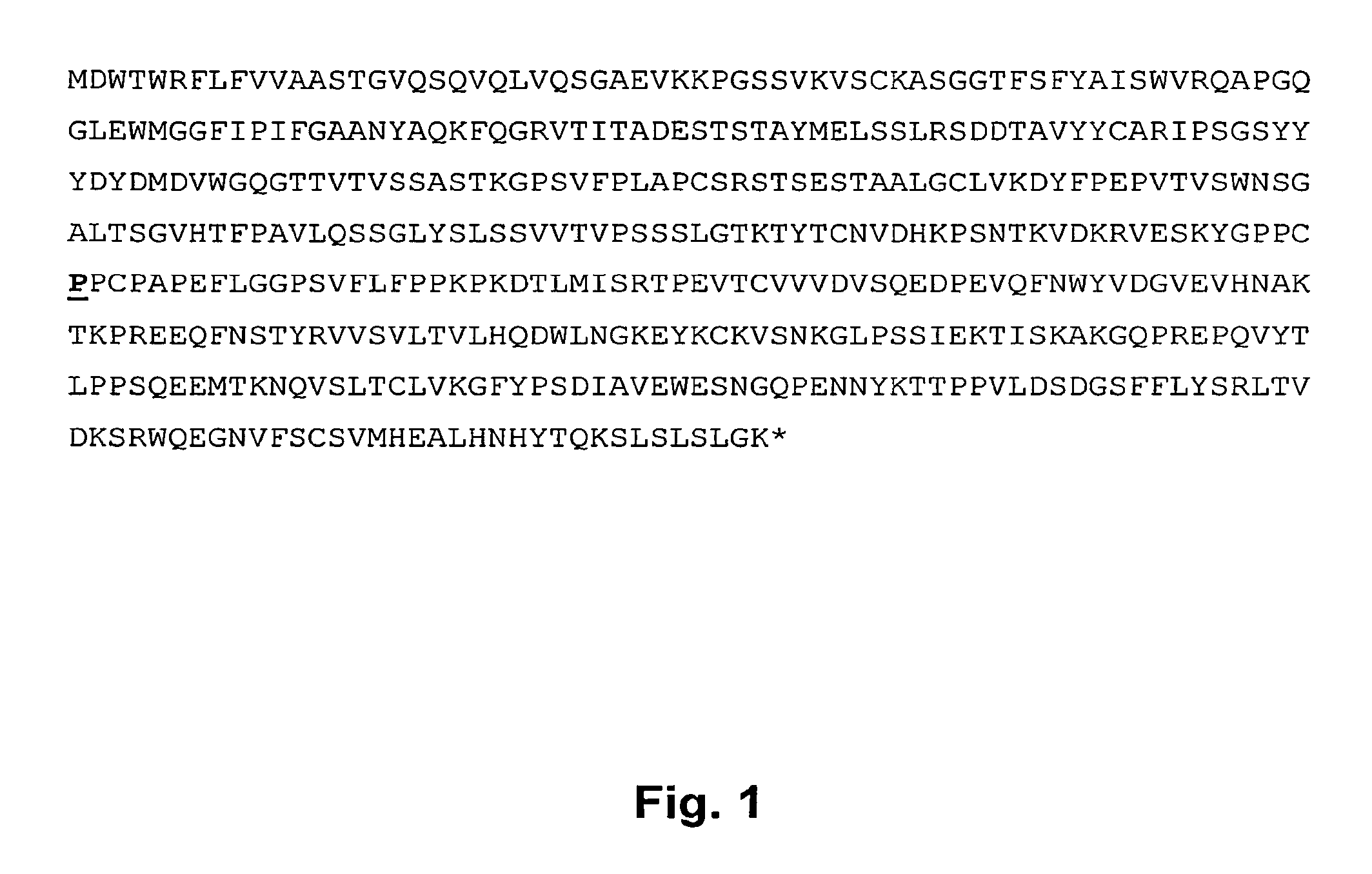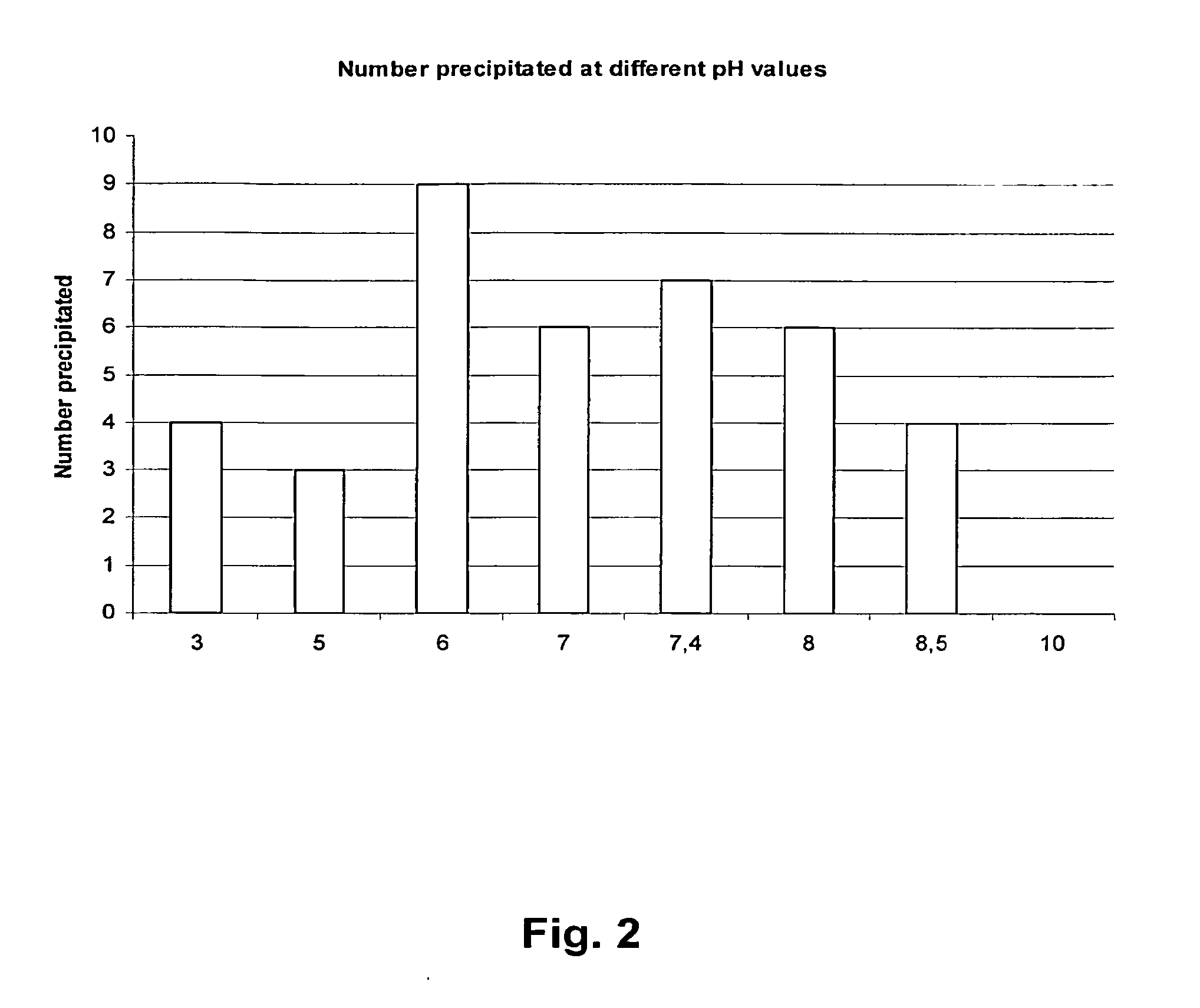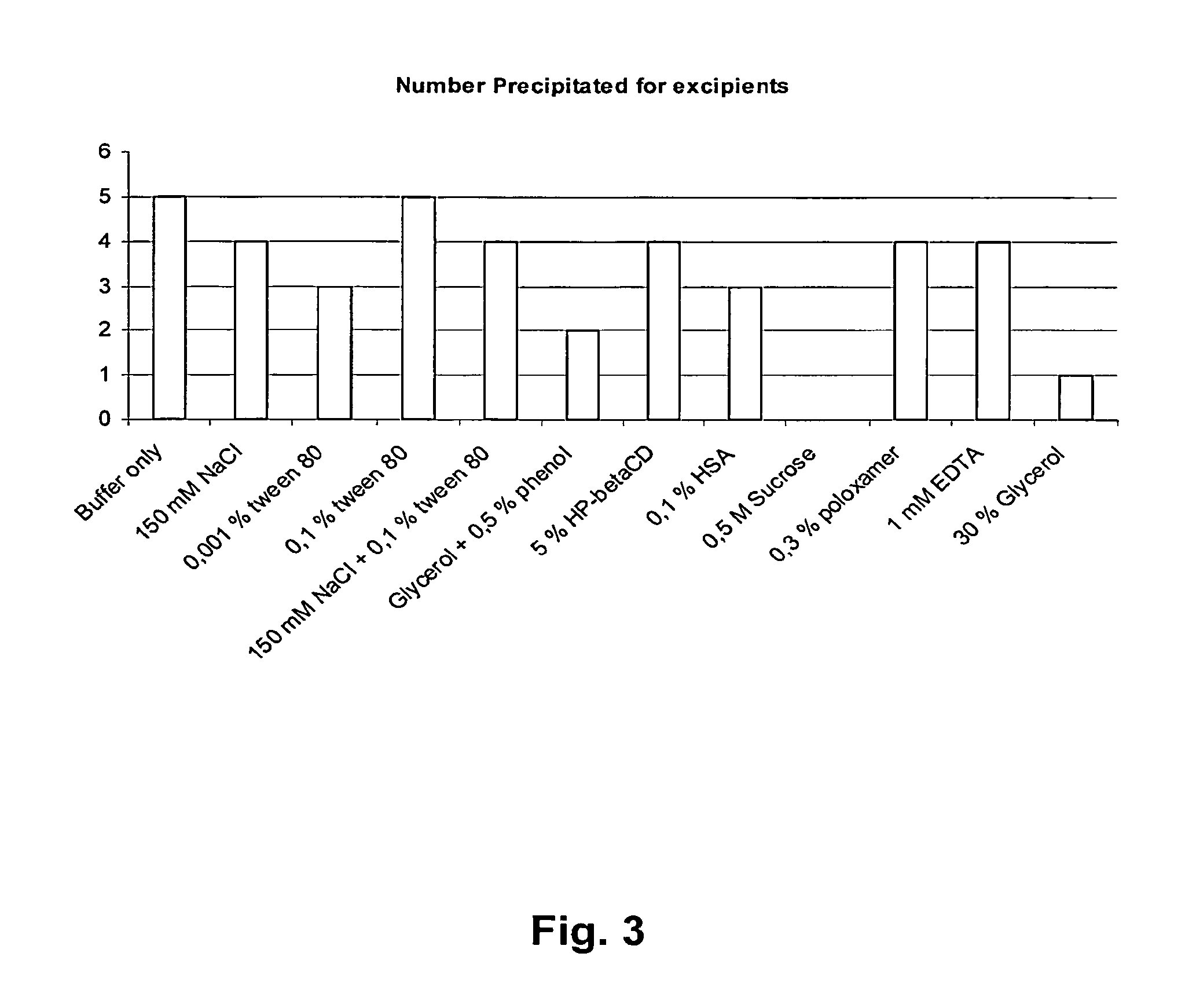Anti-kir antibodies, formulations, and uses thereof
a technology of kir and antibody, applied in the field of anti-kir antibodies and formulations, can solve the problem that the kir protocol is not available to all patients, and achieve the effect of modulating nk cell activity and efficient occupancy of kir receptors
- Summary
- Abstract
- Description
- Claims
- Application Information
AI Technical Summary
Benefits of technology
Problems solved by technology
Method used
Image
Examples
example 1
1-F79 Stability Studies
[0065]The biophysical properties and stability of human antibody 1-7F9 were studied as follows. The folding and secondary structure of the protein was studied by circular dichroism (CD) and the oligomerization and aggregation by dynamic light scattering (DLS). In order to mimic storage conditions for two years at 5° C. the protein was subjected to incubation at 37° C. with shaking for 14 days.
[0066]Materials and Methods
[0067]Sample Preparation.
[0068]2 mg / ml 1-7F9 was prepared in (a) 50 mM Na-Phosphate, 0.001% Polysorbate 80 (Sigma, P8074), pH 7.0; (b) 50 mM Na-Phosphate, 0.001% Polysorbate 80, pH 7.0, 0.5 mM Sucrose; (c) 50 mM Citrate, 0.001% Polysorbate 80, pH 3.0; and d) 50 mM Tris, 0.001% Polysorbate 80, pH 8.5.
[0069]Circular Dichroism (CD).
[0070]CD measurements were performed at 25° C. with a protein concentration of 2.0 mg / ml on a Chirascan circular dichroism spectrometer (Applied Photophysics) equipped with a peltier element for temperature control. 1-7F...
example 2
Solubility Screening
[0077]A microformulation screen which tests 88 different conditions in 1 μl drops was performed on formulations containing anti-KIR human IgG4 antibody 1-F79. The conditions in the screen involved a pH range between 3-10 and the addition of several known excipients. All formulations where inspected visually for precipitation (assessing product clarity, color, and the presence of particles / fibers). For visual assessments, appearance was assessed independently by two operators against daylight (typically) or general laboratory lighting against black and white backgrounds. The results from the pH solubility study are presented in FIG. 2 and the results of the precipitation analysis associated with the different excipients are shown in FIG. 3.
[0078]The results of this analysis show that less precipitation occurred at pH 7.0 as compared to pH 6.0 and 7.4, and that even less precipitation occurred at pH 5.0, 3.0, and 8.5. From the data presented in FIG. 2, it can be se...
example 3
Formulation Study
[0079]Twelve different formulations of 1-F79 (10 mg / mL) were analyzed based on pH, appearance, GP HPLC, SDS-PAGE, and IEF, over a storage period of up to three months at four different temperatures, according to the schedule in Table 3. The formulations tested are shown in Table 4.
TABLE 3Testing Protocol for Stability AssessmentsTime point (months)Temperature0123−20° C. XXNTNT 5° C.XXXX25° C.XNTXX40° C.XXXNTX = tests performed;NT = not tested
TABLE 4Tested formulationsCodeFormulationpHF125 Mm sodium acetate, 125 mM sodium chloride, 0.001%5.5Tween 80F225 Mm sodium acetate5.5F340 mM sodium citrate, 125 mM sodium chloride, 0.001%5.5Tween 80F440 Mm sodium citrate5.5F550 mM sodium phosphate, 100 mM sodium chloride, 0.001%7.0Tween 80F650 mM sodium phosphate7.0F750 mM sodium phosphate, 250 mM sucrose, 0.01%7.0Tween 80F850 mM sodium phosphate, 250 mM sucrose, 0.001%7.0Tween 80F925 mM Tris (base), 125 mM sodium chloride, 0.001%7.5Tween 80F1025 mM sodium citrate, 150 mM sodium...
PUM
| Property | Measurement | Unit |
|---|---|---|
| concentrations | aaaaa | aaaaa |
| concentration | aaaaa | aaaaa |
| concentration | aaaaa | aaaaa |
Abstract
Description
Claims
Application Information
 Login to View More
Login to View More - R&D
- Intellectual Property
- Life Sciences
- Materials
- Tech Scout
- Unparalleled Data Quality
- Higher Quality Content
- 60% Fewer Hallucinations
Browse by: Latest US Patents, China's latest patents, Technical Efficacy Thesaurus, Application Domain, Technology Topic, Popular Technical Reports.
© 2025 PatSnap. All rights reserved.Legal|Privacy policy|Modern Slavery Act Transparency Statement|Sitemap|About US| Contact US: help@patsnap.com



